CALL US TODAY TO CHAT ABOUT HOW WE MIGHT HELP
- Produk
- Solusi
Berdasarkan Sektor Industri
Berdasarkan Peran
Berdasarkan Tantangan Saat Ini
- Artikel
- Hubungi Kami


navigate your next
Transformasi yang terarah, pertumbuhan yang nyata.
Transformasi Digital
Optimalkan kinerja bisnis Anda dengan ERP, BPR, dan Data Analytics yang tepat
Transformasi digital yang efektif berawal dari fondasi sistem ERP (Enterprise Resource Planning) yang mampu mengintegrasikan seluruh proses bisnis dalam satu platform terpadu. Dengan dukungan pendekatan Business Process Reengineering (BPR) dan Data Analytics, perusahaan dapat mencapai efisiensi yang lebih tinggi dan pengambilan keputusan berbasis data yang akurat.
Sebagai konsultan ERP independen di Indonesia yang bersifat vendor-agnostic, KANO berkomitmen membantu Anda menemukan dan menerapkan solusi terbaik sesuai kebutuhan unik bisnis Anda.
Enterprise Resource Planning (ERP)
Sistem ERP mengintegrasikan seluruh data dan proses bisnis perusahaan dalam satu platform terpadu. Tidak ada lagi duplikasi data atau proses manual yang memperlambat pekerjaan. Dengan otomatisasi, perusahaan dapat meningkatkan akurasi, efisiensi, dan kecepatan operasional.
Sebagai konsultan dan integrator ERP independen, KANO membantu menganalisis model bisnis Anda dan menerapkan solusi ERP yang paling tepat bagi kebutuhan perusahaan.

Business Process Reengineering (BPR)
Penerapan sistem ERP yang optimal sering kali membutuhkan perancangan ulang proses bisnis agar produktivitas, efisiensi, dan kualitas meningkat secara signifikan di seluruh lini organisasi. Proses ini dikenal sebagai Business Process Reengineering (BPR).
Sebagai konsultan ERP berpengalaman di Indonesia, KANO memastikan setiap penerapan BPR berjalan efektif, selaras dengan strategi perusahaan, dan meningkatkan pertumbuhan bisnis Anda.

Data Analytics
Perusahaan yang mengelola data dalam jumlah besar (Big Data) memerlukan sistem Data Analytics untuk mempercepat proses analisis dan pengambilan keputusan. Dengan analisa yang tepat, manajemen dapat memahami kinerja, tren, dan peluang bisnis.
Sistem ini dapat diintegrasikan dengan ERP, seluruh data perusahaan dianalisis secara terpadu. KANO memastikan implementasinya berjalan efektif dan mendukung arah strategis bisnis Anda.

solusi Digital
Odoo
Odoo menyediakan modul-modul fleksibel seperti penjualan, pembelian, akuntansi, inventori, manufaktur, SDM, CRM, proyek, dan lainnya. Semuanya dapat disesuaikan sesuai kebutuhan bisnis. KANO adalah Konsultan Odoo di Indonesia yang berpengalaman dalam implementasi Odoo diberbagai perusahaan di Indonesia.
Poin penting Odoo:
Modular & Terintegrasi: Setiap fungsi bisnis memiliki modul tersendiri yang saling terhubung.
Open-source & Fleksibel: Dapat dikembangkan dan disesuaikan dengan kebutuhan unik setiap perusahaan. Dukungan marketplace Odoo Apps untuk modul tambahan
Antarmuka Modern: User-friendly, intuitif, dan berbasis web. Bisa diinstal di server sendiri (on-premise) atau digunakan via cloud (Odoo.sh/SaaS).
Skalabilitas Tinggi: Cocok untuk bisnis kecil, menengah, hingga besar.
Biaya Lebih Efisien: Dibanding banyak ERP komersial lainnya.

Microsoft Dynamics 365
Microsoft Dynamics 365 adalah sistem ERP dan CRM terpadu berbasis cloud yang dikembangkan oleh Microsoft, dirancang untuk membantu bisnis mengelola berbagai fungsi inti seperti keuangan, penjualan, layanan pelanggan, operasi, dan lainnya dalam satu ekosistem yang saling terintegrasi. KANO adalah Konsultan Dynamics 365 di Indonesia yang berpengalaman dalam implementasi Microsoft Dynamics 365 diberbagai perusahaan di Indonesia.
Poin penting Microsoft Dynamics 365:
Modular & Terintegrasi: Terdiri dari aplikasi modular yang bisa digunakan secara terpisah atau dikombinasikan. Semua saling terhubung dan bisa diintegrasikan secara native dengan Microsoft tools lainnya seperti Microsoft 365 (Word, Excel, Outlook) dan Power Platform (Power BI, Power Apps, Power Automate)
Berbasis Cloud (dengan Opsi Hybrid/On-Premise): Didesain untuk dijalankan di cloud Microsoft Azure, tetapi beberapa modul tersedia juga secara on-premise.
Kecerdasan Buatan & Analytics: Terintegrasi dengan AI untuk memberikan insight prediktif.
Skalabilitas Tinggi: Cocok untuk bisnis kecil, menengah, hingga besar.
Keamanan: Keamanan tingkat enterprise dengan sertifikasi global (GDPR, ISO, dll).
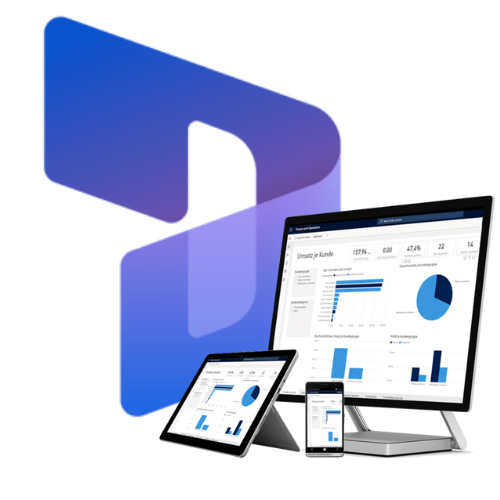
Epicor Kinetic
Epicor Kinetic adalah sistem ERP yang dikembangkan oleh Epicor Software Corporation, dirancang khusus untuk perusahaan manufaktur dan distribusi. Epicor Kinetic merupakan generasi terbaru dari Epicor ERP dan hadir dengan antarmuka yang lebih modern, berbasis web (cloud-native), serta pengalaman pengguna yang lebih intuitif. KANO adalah Konsultan Epicor di Indonesia yang terbukti berpengalaman dalam implementasi Epicor Kinetic.
Poin penting Epicor Kinetic :
Desain Modern dan User-Friendly: Menggunakan antarmuka berbasis browser yang responsif dan modern.
Cloud-First (tapi fleksibel): Epicor Kinetic dibangun untuk cloud (SaaS), namun tetap mendukung on-premise bagi perusahaan yang membutuhkan.
Low-Code/No-Code Tools: Menyediakan tools bagi pengguna bisnis untuk membuat dan memodifikasi aplikasi/layanan tanpa perlu banyak pemrograman.
Integrasi dan Ekosistem: Mendukung API terbuka dan integrasi dengan sistem lain (seperti MES, e-commerce, dan lain-lain).
Keamanan: Dibangun dengan fokus pada keamanan, kontrol akses berbasis peran, dan audit trail.
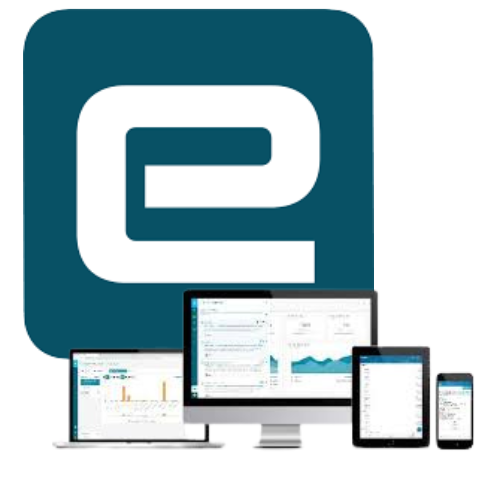
Microsoft Power Platform
Sebuah rangkaian alat dari Microsoft yang memungkinkan pengguna, baik teknikal maupun non-teknikal, untuk membangun aplikasi, mengotomatisasi proses bisnis, menganalisis data, dan membuat agen AI tanpa perlu coding yang kompleks.
Terdiri dari empat produk utama:
Power BI – untuk analisis dan visualisasi data. Digunakan untuk membuat dashboard, laporan interaktif, dan mendapatkan insight dari berbagai sumber data.
Power Apps – untuk membuat aplikasi bisnis kustom. Cocok untuk membangun aplikasi mobile atau web yang terhubung ke data internal perusahaan.
Power Automate – untuk mengotomatisasi alur kerja dan proses bisnis.
Copilot Studio – evolusi dari Power Virtual Agents, kini diperluas dengan kemampuan AI generatif

Microsoft Fabric
Microsoft Fabric adalah platform data end-to-end yang dibangun di atas Microsoft OneLake (penyimpanan data terpusat), dan dirancang untuk menggantikan kerumitan mengelola banyak alat data terpisah.
Komponen Utama Microsoft Fabric:
Data Factory
→ Untuk integrasi dan transformasi data (ETL/ELT), mirip Azure Data Factory.Synapse Data Engineering
→ Untuk proses data skala besar dengan Spark.Synapse Data Warehousing
→ Untuk menyimpan dan mengelola data terstruktur seperti SQL Data Warehouse.Synapse Real-Time Analytics
→ Untuk analisis data streaming dan semi-terstruktur secara real-time.Data Science
→ Mendukung eksperimen machine learning dan model AI.
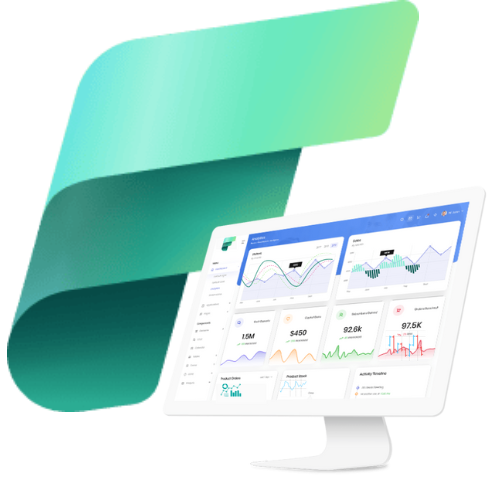
KingswaySoft
KingswaySoft sering digunakan oleh pengembang data dan analis untuk mempermudah proses integrasi tanpa coding yang rumit.
Poin penting KingswaySoft :
Komponen SSIS untuk Dynamics 365 & Dataverse
Mendukung operasi CRUD lengkap (create, update, upsert, delete, merge), query via FetchXML/AuditLog, dan mapping untuk OptionSets dengan mudahIntegrasi Multi-Platform
Tersedia konektor untuk Dynamics CE/CRM, Finance & Operations, Business Central, SharePoint, Salesforce, Oracle CRM, dan lainnyaDirancang khusus untuk Dynamics 365 dengan performa tinggi & kapabilitas full-ETL .
No-code/low-code: user bisa membangun pipelines tanpa programming.
Skalabilitas , cocok untuk migrasi besar dan sinkronisasi data secara terus-menerus.
Komponen kualitas data membantu menjaga integritas data.
Mendukung deployment on-premise dan cloud
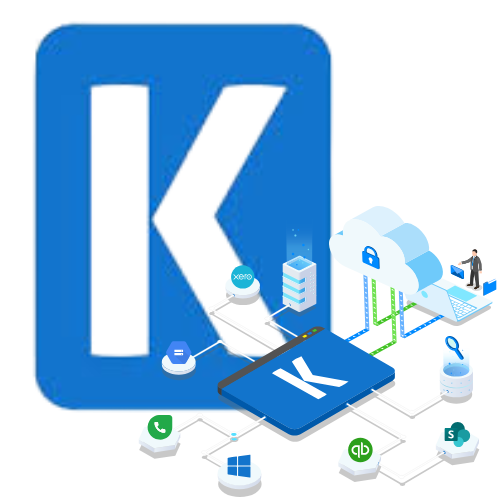
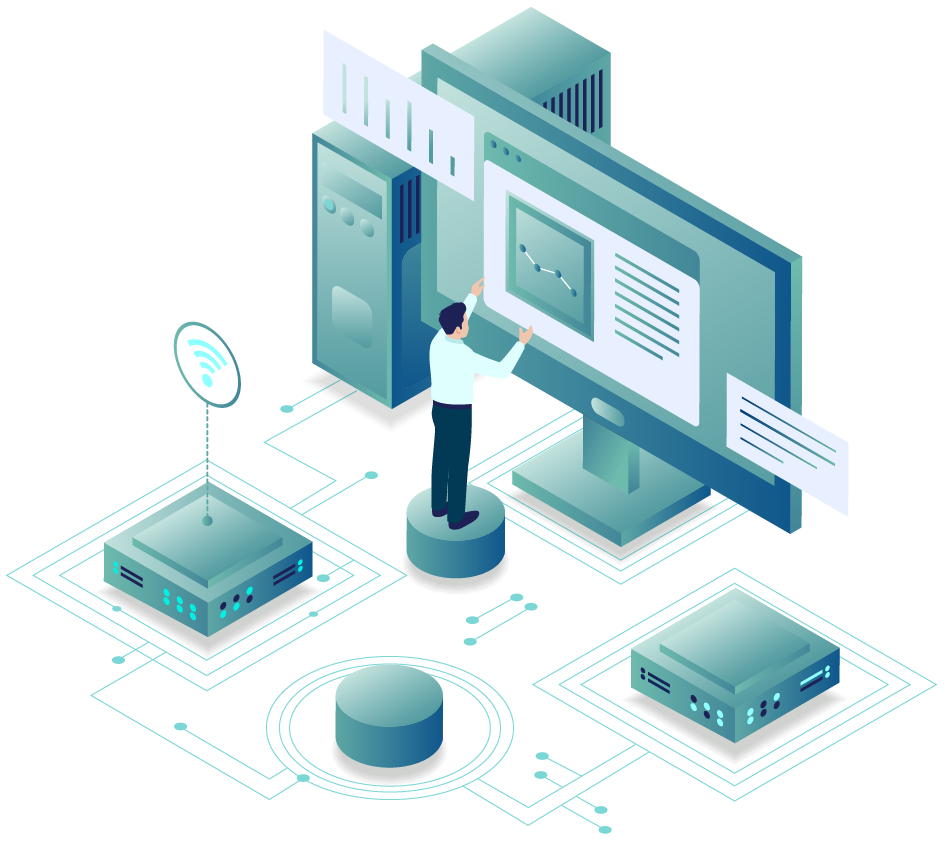
Memahami Dunia Teknologi Perusahaan yang Rumit dengan Fokus Utama pada Keuntungan Investasi (ROI)
Merasa kewalahan dengan banyaknya istilah teknologi? Bingung apakah sebaiknya membeli atau membangun sistem sendiri? Yang membuatnya semakin rumit, banyak solusi teknologi yang saling tumpang tindih, sementara para vendor cenderung menarik arsitektur ke arah mereka agar bisa menjual lebih banyak produk mereka. Ingin tahu mengapa arsitektur jauh lebih penting dibandingkan memilih software enterprise tertentu?
KANO
Apa yang membuat KANO berbeda?
Mencari mitra yang benar-benar memahami bisnis sekaligus teknologi Anda? KANO hadir dengan pendekatan menyeluruh — meninjau sistem, kontrak, arsitektur, hingga aspek legal yang mendasarinya.
Lebih dari sekadar konsultan, KANO terlibat langsung dalam implementasi sebagai satu titik koordinasi, mencakup desain solusi, system assessment, change management, dan pelatihan end user.
Berbeda dengan 80% konsultan ERP independen yang percaya bahwa mereka bisa menyelamatkan implementasi ERP hanya dengan check list, kami tidak berpandangan demikian. Bagi kami, keberhasilan implementasi ERP membutuhkan analisis yang cermat terhadap transaksi dan model data yang selaras dengan model bisnis.
Sistem ERP tidak pernah menjadi solusi untuk semua masalah — dan tidak akan pernah menjadi satu-satunya solusi. Sebagian besar perusahaan membutuhkan 5 hingga 10 aplikasi lain yang digunakan bersama dengan ERP. Berbeda dengan kebanyakan konsultan ERP lainnya, kami memiliki keahlian di berbagai sistem, termasuk HCM, CRM, E-commerce, WMS, dan TMS.”
Kecuali Anda memiliki pengalaman langsung dalam mengimplementasikan sebagian besar sistem ERP yang ada di pasar, semuanya akan terlihat mirip. Padahal, perbedaan kecil inilah yang membuat implementasi ERP menjadi sangat menantang. KANO dapat mempermudah hal tersebut: Kami memiliki pengalaman langsung dalam mengimplementasikan sebagian besar sistem ERP terkemuka
Membangun arsitektur yang netral terhadap vendor membutuhkan pemetaan alur data antar entitas, departemen, proses, dan sistem yang berbeda. Hal ini juga mengharuskan Anda untuk mengidentifikasi sumber data utama (source of truth) untuk setiap dataset yang digunakan bersama. Dan masih banyak lagi. Hanya sedikit konsultan seperti KANO yang memiliki keahlian mendalam dalam membangun arsitektur perusahaan yang mampu berkembang secara skala besar.
Sebanyak 80% proses bisnis relatif serupa di berbagai industri. Namun, justru 20% sisanya yang menentukan keberhasilan atau kegagalan inisiatif transformasi digital. Proses 20% ini bersifat unik untuk masing-masing mikro-sektor, dan bisa memakan biaya jutaan dolar jika harus dikustomisasi tanpa dikaji terlebih dahulu oleh ahli seperti KANO.
Terjebak dengan model bisnis yang sudah usang dan bingung bagaimana melakukan transformasi digital? Dengan metodologi uniknya, KANO dapat membantu, baik Anda membutuhkan dukungan untuk DTC, pengalaman omnichannel, Industry 4.0, atau tren terbaru lainnya yang mungkin memengaruhi kinerja organisasi Anda.
"ERP tanpa analisa bisnis yang kuat ibarat kapal tanpa arah, kami memberikan arah, bukan hanya perangkat."
What we do
Kami menyediakan solusi bisnis yang lengkap dan beragam
Masalah yang Kami Selesaikan untuk Perusahaan Implementasi Sistem ERP
Perusahaan yang sedang berkembang atau melakukan modernisasi sistem yang ada mungkin sedang mempertimbangkan untuk mengadopsi ERP baru.Pendorong lainnya dalam implementasi ERP bisa berupa kebutuhan untuk mengkonsolidasikan jejak sistem yang tersebar atau akibat dari akuisisi perusahaan yang menyebabkan terjadinya silo data. Perusahaan-perusahaan ini mungkin akan melalui proses seleksi sebelum memilih sistem ERP yang tepat, atau langsung masuk ke tahap implementasi, tergantung pada kompleksitas proyek yang dijalankan.

Melakukan Transformasi Digital pada Bisnis Mereka
Perusahaan yang berada pada titik balik pertumbuhan membutuhkan transformasi menyeluruh dalam operasional mereka untuk mencapai titik balik berikutnya dalam perjalanan bisnisnya. Perusahaan-perusahaan ini mungkin akan mengkonsolidasikan jejak sistem yang dimiliki dan mengimplementasikan model bisnis baru seperti DTC (Direct-to-Consumer), BOPIS (Buy Online, Pick Up In Store), atau ROPIS (Reserve Online, Pick Up In Store). Atau membangun kembali kapasitas digital mereka guna meningkatkan pengalaman pelanggan.

Masalah yang Kami Selesaikan untuk Perusahaan dengan Tantangan Supply Chain
Mengapa perusahaan menghadapi tantangan supply chain?
Tantangan tersebut bisa disebabkan oleh tingkat kematangan perencanaan yang belum optimal, masalah kualitas data, atau sistem yang terlalu kompleks (over-engineered). Tantangan lainnya meliputi peramalan permintaan (demand forecasting) dan perencanaan supply chain. Selain itu, masalah juga bisa terjadi pada pengelolaan inventaris dan alokasi barang. Terakhir, tantangan dapat muncul dari kurangnya visibilitas terhadap supply chain di seluruh jaringan dan proses perpindahan material yang tidak efisien.

Butuh Layanan Konsultasi Bisnis dan Teknologi?
Perusahaan yang mengalami kesulitan dalam proses bisnisnya dan belum yakin perubahan apa yang perlu dilakukan — baik pada proses maupun sistem mereka — memerlukan bantuan untuk mendefinisikan tantangan serta visi mereka sebelum siap melakukan implementasi perubahan.
Mereka mungkin membutuhkan dukungan karena menghadapi tantangan seperti:
- kebingungan dalam mengambil keputusan antara membeli solusi jadi (buy) atau membangun sendiri (build)
- kesulitan menyelaraskan kepentingan para pemangku kepentingan (stakeholder)
- permasalahan integrasi sistem pasca-merger.

OUR METHOD
Pendekatan Metodologi Kami
Metodologi kami dimulai dengan penilaian terhadap proses dan arsitektur sistem yang ada saat ini. Dari hasil evaluasi tersebut, kami menyusun digital roadmap yang memetakan perubahan yang diperlukan pada proses, data, dan sistem untuk mencapai kondisi bisnis yang diinginkan. Setelah rencana dan arah perubahan disetujui oleh tim eksekutif, kami merumuskan action plan bertahap — dimulai dari inisiatif yang paling mudah diterapkan dan memberikan hasil paling signifikan. Tahapan ini dapat mencakup pemilihan sistem ERP, implementasi solusi baru, hingga optimalisasi sistem yang sudah berjalan.
Penilaian
Reengineering
Kunci Keberhasilan dan Solusi
Analisis Fit-Gap dan ROI Tiap Solusi
Pemilihan Solusi dan Negosiasi Kontrak
Implementasi dan Penerapan Solusi
insight
-
Dynamics 365, ERP, Technology
Field Service Bookings kini terintegrasi dengan Outlook & Teams
Selengkapnya -
Dynamics 365, ERP, Industry
3 cara menghadapi perubahan tarif dengan AI agent
Selengkapnya -
ERP, Odoo
Di Balik Layanan Perawatan Hewan: Bagaimana Odoo Menyederhanakan Operasional Bisnis Klinik
Selengkapnya -
Epicor
Epicor Bantu Distributor di Australia dan Selandia Baru Ubah Insight Menjadi Aksi Lewat Epicor Prophet 21 Cloud ERP
Selengkapnya
PT. Kano Andalan Nusantara Otomasi (KANO)
-
Monday to Saturday: 9.00am to 5.00pm
-
Workshop
Jl Margorejo Indah VI Blok B No. 618






